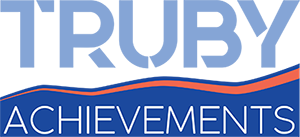Productivity and Profitability Gains through Efficiency Systems

Last Updated on October 7, 2024 by Bill Truby
A boutique winery, an architectural firm, a large manufacturing company or a local retail store – ALL gain greater productivity and profitability when a high-performing team uses clearly defined efficiency systems. Greater morale, increased productivity, more profit and higher retention always accompany teams who align around specifically chosen systems. Why is that? And, how is it that systems are so crucial to success?
It is important for all of the team to be aligned with one chosen efficiency system in every area where a system is needed. Five ways to do something right is still wrong. The high performing team of Blue Angels aligns around ONE system of maneuvers. Individuals do not implement maverick ideas or actions after a decision is made. Everyone is completely accountable to a clearly defined system. No one ever asks, “Now which way was I supposed to turn?”
What systems do you need?
The first step to creating systems is to identify the systems you need. Don’t get too macro or too micro in the types of systems you list. “Be Profitable” is too macro. “How to Pick Up the Receiver When Answering the Phone” is too micro. Identify the systems that will have the highest leverage and greatest impact on the success of your business.
There are four categories of systems in every organization or focal point of an organization. For example, the administration of an entire hospital will need systems in these four categories, but so will the Emergency Department or the Out-Patient Clinic. Following is a list of the four categories of systems.
- “Management” systems: The systems necessary to lead and manage the organization or department. These could include strategic planning, hiring, information flow, or interfacing with the community or other departments.
- “Get” systems: The systems necessary to receive or generate the work of the organization or department. Some of these systems could include marketing systems such as responding to an RFP or PR. A department who does not market to generate work would still have systems for “receiving” work. An emergency department of a hospital, for example, would need efficient systems for receiving patients and giving them an initial assessment or care
- “Do” systems: These are the systems needed to actually do the work. Project management systems, patient flow systems, or systems involved in making a sale would be an example of “do” systems.
- “Support” systems: These are systems that are needed to do the work but are not necessarily connected with the product or service you provide. Everything from accounting to janitorial, purchasing to facilities management – all would be illustrations of the type of systems in this category.
Companies we work with typically create a list of systems that need to be aligned, refined, or designed. They will identify (1) systems that are already working, albeit not necessarily consistently used therefore needing alignment; (2) systems that exist but need refining based on the components of an efficient system (see below); and (3) systems that need to be created or designed.
What are the components of a well-designed efficiency system?
A well-defined system has a name to identify it, a goal the system is designed to accomplish, an input (that which triggers the system), an output (tied to the goal of the system), the steps within the system, and a list of considerations – items that should be considered or done at each step. Though the steps are by nature sequential and necessary, the considerations at each step are not. They can be accomplished simultaneously or left out completely if, after consideration, it is not necessary in the current implementation of the system.
A good system is clear, efficient, and simple in its path. A well-defined system may have a loop in it, however. The loop can occur if one of the steps is to get sign-off on a given step. If a customer or manager cannot sign-off at a certain step, the action item can loop back to the previous step. If you encounter a lot of branches in the flow as you design a system, this is usually a clue that you are dealing with more than one system.
Teams of people who practice well-defined efficiency systems, greatly excel in achieving maximum productivity and profitability. We’ve seen it happen every time!

Efficiency systems are one of the 8 steps of the Truby Management System (TMS). The TMS is a decades-old, PROVEN leadership/management system that works as a business model to grow your business.
To learn more about the TMS, watch a free 65-minute Leadership Masterclass that includes an introduction to our proven basic system here.
The TMS Revealed video has our basic, rock-bottom foundational teachings from which everything else flows. It includes three bedrock principles, an 8-step management system (for your business or team), and a revelation of the POWER that is in the leadership role (with tips on how to use that power for good).
You can also follow us on Social Media for more content:
LinkedIn | Facebook | Instagram | YouTube
Bill Truby
Founder and President of Truby Achievements

